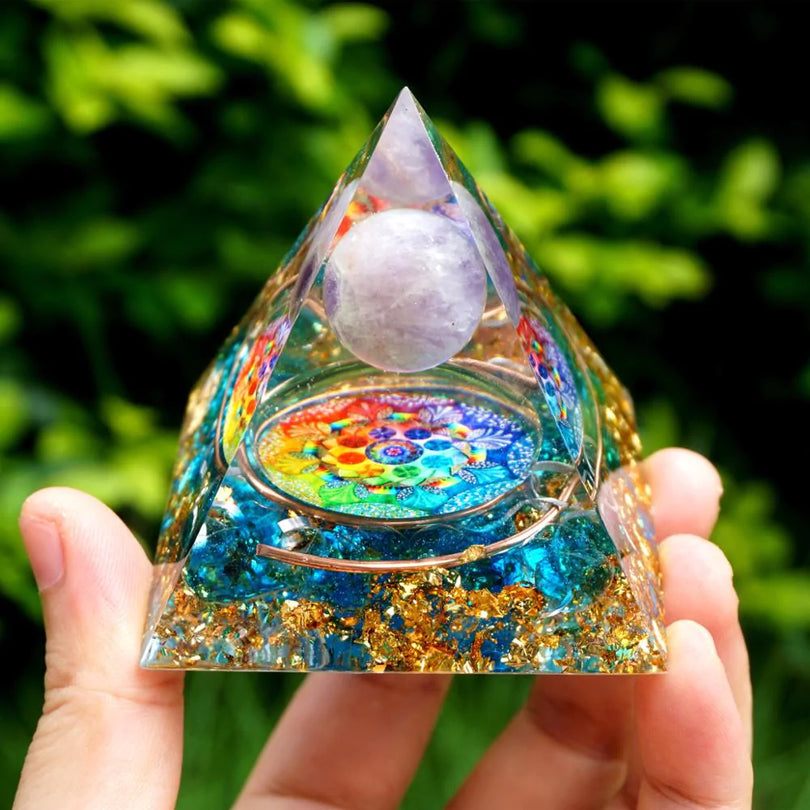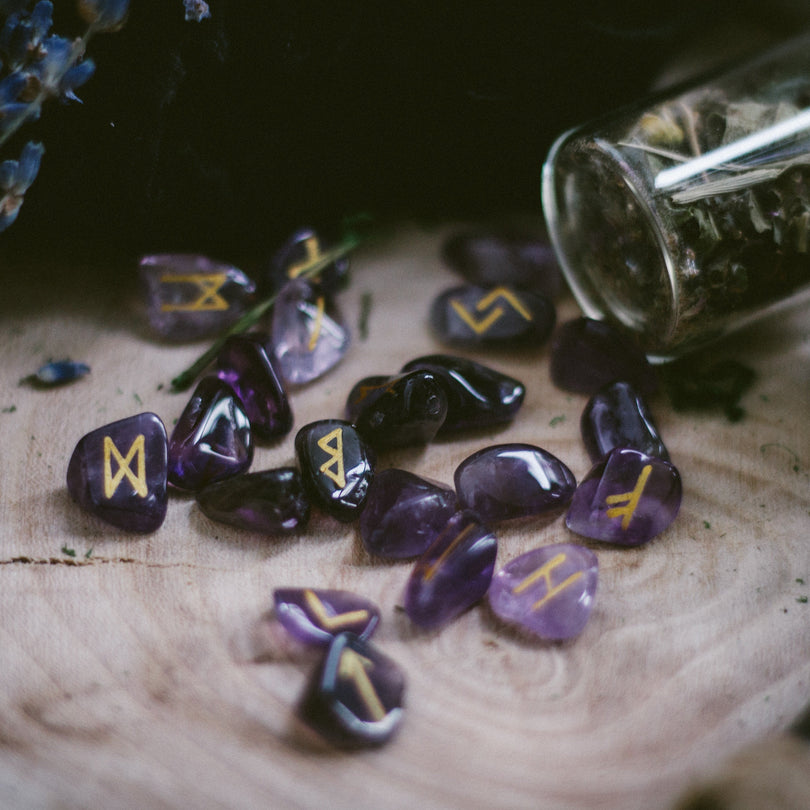St. Patrick's Day is celebrated around the world every year on March 17th. This holiday is usually associated with the color green, shamrocks, and Irish culture. However, what most people don't know is that St. Patrick's Day has deep pagan roots that date back to pre-Christian Ireland. In this blog post, we'll explore the pagan origins of St. Patrick's Day and how they influenced the holiday we celebrate today.
Origins of the Pagan Festival
Before Christianity arrived in Ireland, the ancient Celts celebrated the spring equinox, which falls on March 21st, with a festival known as Ostara. This festival was a celebration of the end of winter and the start of the spring season. The Celts believed that during the spring equinox, the veil between the physical world and the spiritual world was at its thinnest, and they would perform rituals to honor their gods and goddesses.
One of the most important deities in the Celtic pantheon was Eostre, the goddess of spring and fertility. Her name is believed to have given rise to the modern English word "Easter." The Celts would offer sacrifices and perform other rituals to honor Eostre and ensure a successful harvest in the coming months.
The Influence of Christianity
In the early 5th century, Christianity arrived in Ireland with St. Patrick, a missionary who became the patron saint of Ireland. St. Patrick is said to have converted the Irish people to Christianity by using the shamrock, a three-leafed clover, to explain the Holy Trinity. He also used traditional Irish symbols, such as the sun and the cross, to represent Christian concepts.
St. Patrick's Day began as a Christian feast day to honor St. Patrick and his accomplishments. The first St. Patrick's Day parade was held in Boston in 1737, and the holiday became an official Irish holiday in 1903.
Despite its Christian origins, many of the traditions associated with St. Patrick's Day have pagan roots. For example, the color green is associated with St. Patrick's Day because it represents the rebirth of spring. In pagan times, green was also associated with fertility and the natural world. The shamrock, which is now a symbol of Ireland, was originally a sacred plant to the Celts and was believed to have protective powers.
The Importance of Fire
Fire was also an important part of the Ostara festival, and its importance continued even after the arrival of Christianity. Bonfires were lit on hilltops to welcome the spring and ward off evil spirits. In some parts of Ireland, people still light bonfires on St. Patrick's Day.
Another tradition associated with St. Patrick's Day is the wearing of green. The Celts believed that wearing green would protect them from evil spirits, and the color is still associated with luck and good fortune. In Ireland, it is customary to wear a small bunch of shamrocks on St. Patrick's Day, which is a nod to the plant's original significance.
The Role of Music and Dance
Music and dance have always been important parts of Irish culture, and they played a role in the Ostara festival as well. The Celts would sing and dance around the bonfire to celebrate the arrival of spring. Today, traditional Irish music and dance are still an important part of St. Patrick's Day celebrations.
The Irish step dance, which is characterized by quick, precise movements of the feet and legs, is perhaps the most famous form of Irish dance. It originated in the 18th century and is now performed around the world.
Conclusion
St. Patrick's Day is a holiday that is celebrated around the world, but few people know about its pagan origins. While Christianity eventually replaced pagan beliefs in Ireland, many of the traditions associated with St. Patrick's Day still have deep pagan roots. From the color green to the shamrock and bonfires, these traditions offer a fascinating glimpse into the ancient beliefs and practices of the Celtic people. Whether you celebrate St. Patrick's Day for its religious or cultural significance, it's important to understand the holiday's rich history and the diverse influences that have shaped it over the centuries.
Origins of the Pagan Festival
Before Christianity arrived in Ireland, the ancient Celts celebrated the spring equinox, which falls on March 21st, with a festival known as Ostara. This festival was a celebration of the end of winter and the start of the spring season. The Celts believed that during the spring equinox, the veil between the physical world and the spiritual world was at its thinnest, and they would perform rituals to honor their gods and goddesses.
One of the most important deities in the Celtic pantheon was Eostre, the goddess of spring and fertility. Her name is believed to have given rise to the modern English word "Easter." The Celts would offer sacrifices and perform other rituals to honor Eostre and ensure a successful harvest in the coming months.
The Influence of Christianity
In the early 5th century, Christianity arrived in Ireland with St. Patrick, a missionary who became the patron saint of Ireland. St. Patrick is said to have converted the Irish people to Christianity by using the shamrock, a three-leafed clover, to explain the Holy Trinity. He also used traditional Irish symbols, such as the sun and the cross, to represent Christian concepts.
St. Patrick's Day began as a Christian feast day to honor St. Patrick and his accomplishments. The first St. Patrick's Day parade was held in Boston in 1737, and the holiday became an official Irish holiday in 1903.
Despite its Christian origins, many of the traditions associated with St. Patrick's Day have pagan roots. For example, the color green is associated with St. Patrick's Day because it represents the rebirth of spring. In pagan times, green was also associated with fertility and the natural world. The shamrock, which is now a symbol of Ireland, was originally a sacred plant to the Celts and was believed to have protective powers.
The Importance of Fire
Fire was also an important part of the Ostara festival, and its importance continued even after the arrival of Christianity. Bonfires were lit on hilltops to welcome the spring and ward off evil spirits. In some parts of Ireland, people still light bonfires on St. Patrick's Day.
Another tradition associated with St. Patrick's Day is the wearing of green. The Celts believed that wearing green would protect them from evil spirits, and the color is still associated with luck and good fortune. In Ireland, it is customary to wear a small bunch of shamrocks on St. Patrick's Day, which is a nod to the plant's original significance.
The Role of Music and Dance
Music and dance have always been important parts of Irish culture, and they played a role in the Ostara festival as well. The Celts would sing and dance around the bonfire to celebrate the arrival of spring. Today, traditional Irish music and dance are still an important part of St. Patrick's Day celebrations.
The Irish step dance, which is characterized by quick, precise movements of the feet and legs, is perhaps the most famous form of Irish dance. It originated in the 18th century and is now performed around the world.
Conclusion
St. Patrick's Day is a holiday that is celebrated around the world, but few people know about its pagan origins. While Christianity eventually replaced pagan beliefs in Ireland, many of the traditions associated with St. Patrick's Day still have deep pagan roots. From the color green to the shamrock and bonfires, these traditions offer a fascinating glimpse into the ancient beliefs and practices of the Celtic people. Whether you celebrate St. Patrick's Day for its religious or cultural significance, it's important to understand the holiday's rich history and the diverse influences that have shaped it over the centuries.











2 comments
Yvonne Aburrow
The ancient Celts did not celebrate Spring Equinox under the name Ostara. The name Ostara was a back-formation from Eostre (an Anglo-Saxon goddess, possibly from Kent) coined in the 19th century.
The ancient Celts did not celebrate Spring Equinox under the name Ostara. The name Ostara was a back-formation from Eostre (an Anglo-Saxon goddess, possibly from Kent) coined in the 19th century.
Patt
😎 🆒️
😎 🆒️